1865: Rudolph Koenig's sound synthetizer
1876: Elisha Gray's musical telegraph
1897: Thaddeus Cahill's Teleharmonium
1919: Lev Sergeyevich Termen's Theremin
1939: Laurence Hammond's Novachord
1951: Raymond Scott's sampler
| Computer Music |
Milestones
| 1950: The CSIRAC was the first computer to play music. In November 1951 a demonstration was made at the Australia's first computer conference. |
| 1951: The Ferranti Mark I plays "God Save the King", "Baa Baa Black Sheep", and a bit of "In the Mood" in a BBC recording. |
| 1955: University of Illinois first experiences with computer music with the ILLIAC 1 computer. |
| 1957: The first software and language for musical sound synthesis was MUSIC created by Bell Labs (versions: Music I through Music V) for the IBM 704. |
1965: The DEC PDP-1 (1959) to VAX 11/780 (1976) were often used to play music. |
| 1976: The KIM-1 was the first micro-computer used to play music. |
| 1979: The casio fx-501P was able to play music trough the cassette interface. |
| 1980's: Almost every home computer is equipped with frequency generators or sound chips. |
| Electronic Synthetizers overview |
| 1957 | RCA Mark II Sound Synthesizer |
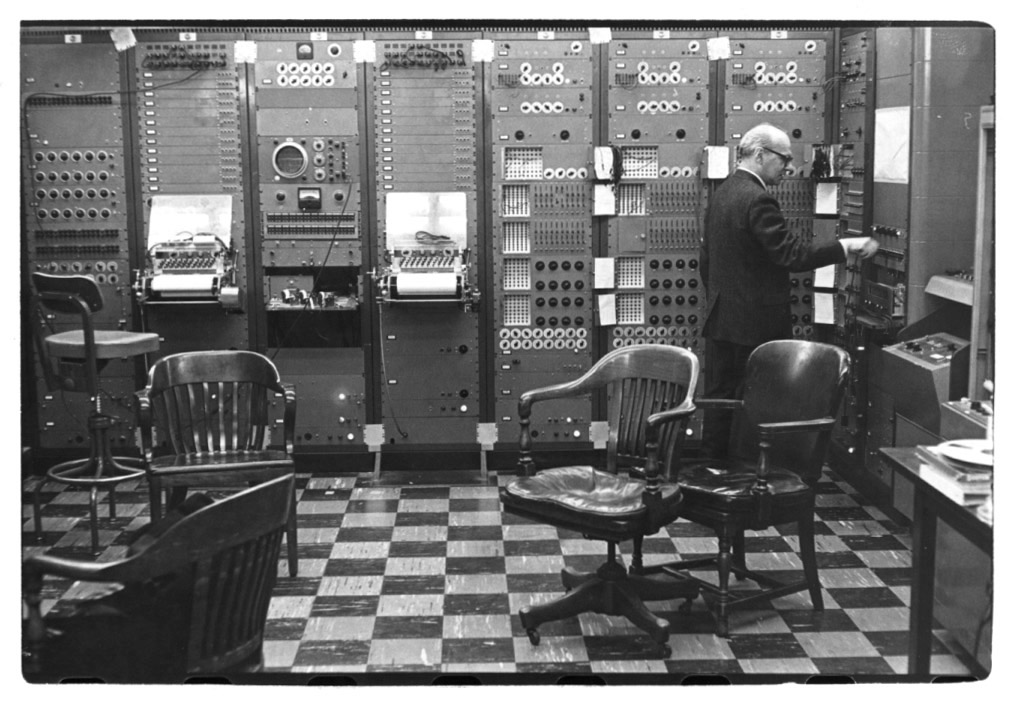 |
|
| 1962 | Synket: the first portable synthetizer |
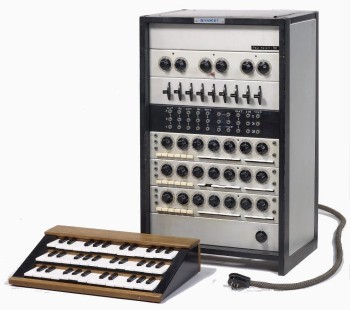 |
|
| 1963 | Buchla Electric Music Box 100 |
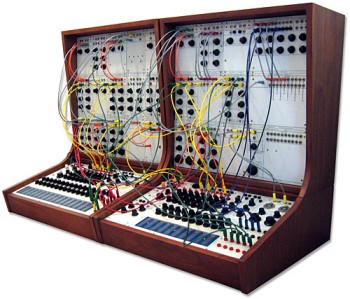 |
|
| 1967 | Moog Modular synthesizer I |
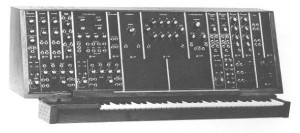 |
|
| 1969 | EMS VCS 3 |
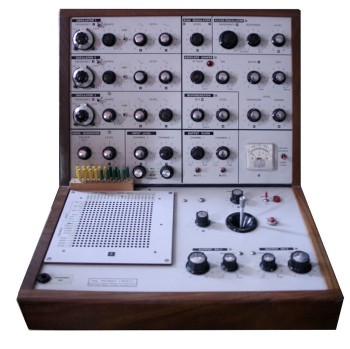 |
|
| 1970 | ARP 2500 |
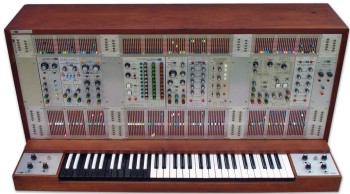 |
|
| 1972 | ElectroComp 100 |
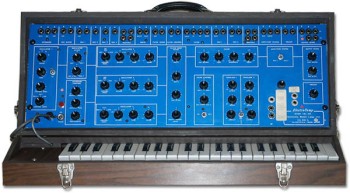 |
|
| 1973 | Roland SH-1000: the first model from Roland |
 |
|
| 1975 | Oberheim Electronics Four Voice |
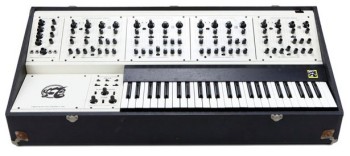 |
|
| 1976 | New England Digital Corp. Synclavier: the first numeric synthetizer |
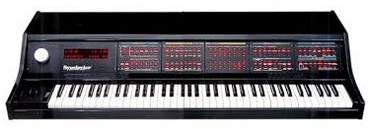 |
|
| 1978 | Sequential Circuits Prophet 5: the first synthetizer controlled by microprocessor |
 |
|
| 1979 | Fairlight CMI: an early music workstation wich democratized the sampling |
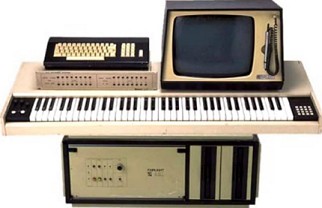 |
|
| 1980 | AlphaSyntauri: the first synthetizer based on a micro-computer (Apple II) |
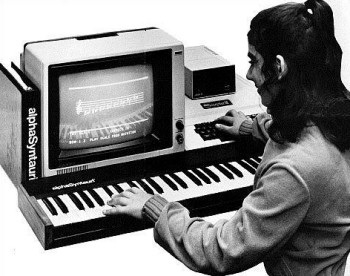 |
|
| 1981 | Casio VL-1: the first model from Casio |
 |
|
| 1982 | Sequential Circuits Prophet-600: the first synth with MIDI interface |
 |
|
| 1983 | Yamaha DX-7: the first commercially successful FM digital synthesizer |
 |
|
| 1988 | Korg M-1: the first music workstation |
 |
| Technology |
MIDI (Musical Instrument Digital Interface)
Standardised in 1983. MIDI was invented so that musical instruments could
communicate
with each other and so that one instrument can control another.
One of the first synthetiser to incorporate a MIDI interface was the Prophet-600
and the Roland JX-3P
and Roland Jupiter-6 in 1983.
The Atari ST was favored for its MIDI ports that were built directly into the computer.
Sound chips
(source : Encyclopedia Gamia)
In the early 1970's, there were no sound chips, so the sound usually consisted
of either simple digital bleeps generated from the discrete circuitry or explosion sounds
generated through electro-mechanical methods.
In the late 1970's, sound boards and sound chips began to be used, leading to
the introduction of chiptune music.
In 1975, the Taito 597-907 Logic Board equipped early Taito arcade games.
Designed in 1979, the General Instrument AY-3-8910 was a popular sound chip used in
many
game consoles and microcomputers.

In the 1980's, sound chips capable of FM synthesis and PCM sampling were introduced,
along with audio playback from the Laserdisc and CD formats.
During the late 1980's to 1990's, sound chips became more sophisticated, with more
advanced
FM synthesis,
dozens of PCM channels, MIDI support, and playback of compressed audio files.
Here a list of sound chips used in microcomputers.
Audio formats (selection)
MP3
Aka MPEG-2 Audio Layer III introduced in 1993.
MP3 is an audio coding format for digital audio which uses a form of lossy data compression.Compared to CD quality digital audio, MP3 compression commonly
achieves 75 to 95% reduction in size.
MP3 was designed by the Moving Picture Experts Group (MPEG) formed by several teams of engineers
at Fraunhofer IIS, University of Hanover, AT&T-Bell Labs, Thomson-Brandt, CCETT, and other.
More informations about the mp3 format on wikipedia
MIDI
A midi file (MID) is the numerical transcription of a musical partition. It contains enter others,
of the data called events which specify for each note to play information
necessary (note, instrument, swiftness, time).
MOD
Generaly created by a tracker (Amiga, 1987), a MOD file contains
a
set of "instruments"
under
the form of samples represented by a list of "patterns" who indicate how
those
samples
sould be played. Successors were the XM, S3M and IT.
Sound extract from an Alphaville's song
More informations about the MOD format on wikipedia.
Look at the story of trackers in Ahoy's video Trackers: The Sound of 16-bits.
The Mod Archive is one of the most largest collection of music modules.
KAR
KAR is a file extension for a text and midi file format used in Karaoke.
KAR was designed by Tune 1000 Corp. in the late 90's as a MIDI format variation.
The KAR file format is now one of the main formats for karaoke in the freeware market.
KAR files contain added text for lyrics, synchronized with the Midi music.
Sound Card for PC
(source: my "Internet Story page")
Computer's integrated speaker |
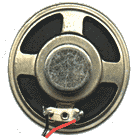 |
A one voice beeper equiped the firsts PCs. |
| AdLib | 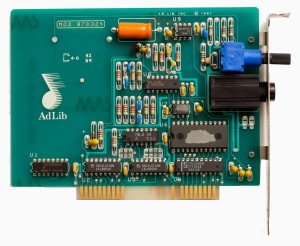 |
The first Audio boards came out in 1987 (Adlib). |
SoundBlaster |
Sound extract from the game Commanche 3 |
Related page: Sound on the PC
| Software |
1957: MUSIC
MUSIC was written by Max Mathews in 1957 at Bell Labs.
MUSIC was the first computer program for generating digital audio
waveforms through direct synthesis.
More informations about MUSIC on wikipedia
1970: GROOVE
GROOVE (Generated Real-time Output Operations on Voltage-controlled Equipment) was a
system which used a computer to
help the composer to specify musical
instructions by displaying
a visual representation of the instructions on a monitor.
The
sound was generated in real-time by an analogue synthesiser.
It was known as a 'hybrid'
system because it used both analogue and digital technology.
1970: MUSYS
MUSYS was a a group of software or as a system for the composition and the
execution
of electronic music developped by the Electronic Music Studios (EMS)in London
and using a PDP-8 computer.
1972: EMS
EMS 1, a music and synthesis specification language running on a PDP-15,
is completed
at the Stockholm EMS.
1986: Music Mouse
Music Mouse was an algorithmic musical composition software for Macintosh, Amiga
and Atari computers.
1987: Ultimate Soundtracker
The very first tracker music software. Based on C64's SoundMonitor for Amiga computers.
Very popular in the Demo scene since mid 90s when CD-ROM appears with 16-bit digital technology. Successor where NoiseTracker, Protracker, MED,... for Amiga followed by Scream Tracker
and FastTracker for PC.
1989: Cubase
The first popular sequencer. The first version (on Atari ST) introduced the concept of the 'arrange page'
with
its
vertical list of
tracks and horizontal timeline – a design that quickly became the
standard
interface
for
all
commercially developed sequencers.
2000: Reason
Reason was a very successful digital audio workstation for creating and editing music and audio.
Micro computer music hardware timeline
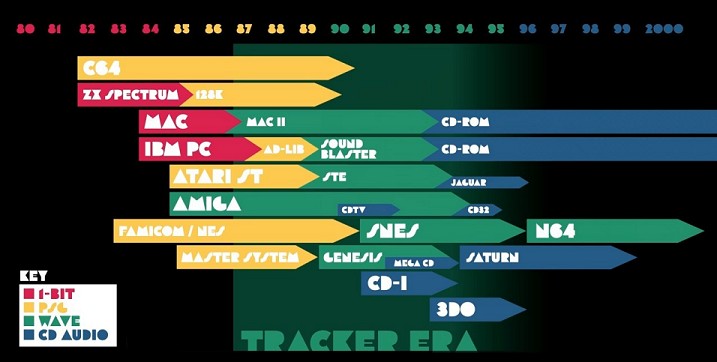
| Music oriented programming languages |
From MUSIC written in 1957
to Panoramic
in 2007 through 102 different
languages referenced in my Programming Languages Database
| Bibliography |
Links selection
Brief history of computer music
History of Electronic and Computer Music
Programming Languages Used for Music
Books (from my bookshelf)
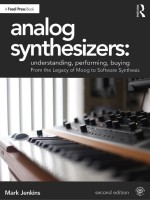 |
Analog Synthetisers - From the legacy of Moog to Software Synthesis (2020) |
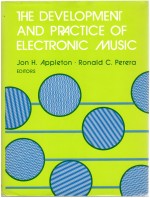 |
The Development and Practice of Electronic Music (1975) |
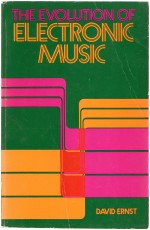 |
The Evolution of Electronic Music (1977) |
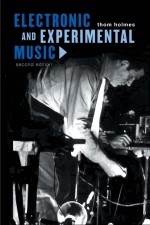 |
Electronic and Experimental Music (1985) |
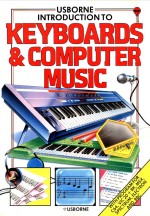 |
Keyboard and Computer Music (1985) |
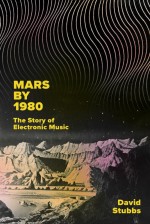 |
Mars by 1980 - The Story of Electronic Music (2018) |
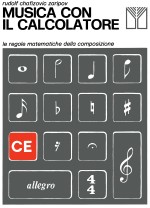 |
Musica con il calcolatore (1979) |
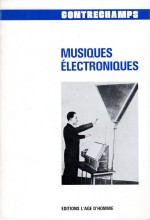 |
Musiques Electroniques (1989) |
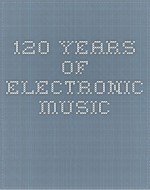 |
120 Years of Electronic Music (1990) |
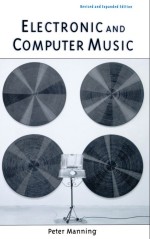 |
Electronic and Computer Music (2004) |
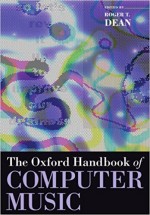 |
The Oxford Handbook of Computer Music (2009) |
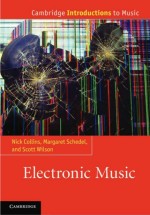 |
Electronic Music (2013) |

